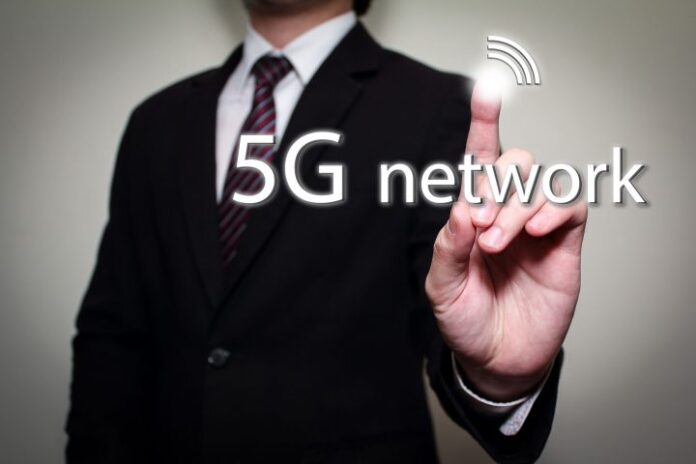The path to 5G is not going to be easy, but there are technologies in place to help the effort
The excitement is increasing around the future of “5G” networks, and with good reason. As Federal Communications Commission Chairman Tom Wheeler suggested in his remarks earlier this summer, all of the “transformational advancements that will define the 21st century” won’t happen until three limiting factors are resolved, all of which point to the need for 5G networks:
1. The speed of the wireless connections is improved: The next generation of wireless must be like mobile fiber, i.e., work at speeds 10- to 100-times faster than exist today.
2. Real-time responsiveness: Latency needs to be less than one millisecond to provide for real-time interactions, such as remote surgery.
3. Spectrum capacity: High-speed wireless broadband requires digital information racing down broad spectrum pathways.
However, as quickly as the industry seems to be moving, the rollout of 5G will be more of a marathon than a sprint. Yet while building out 5G networks was expected to require significant time, we’ve seen the timeline shift closer recently with trials being announced by some of the world’s major service providers. In the United States, all four major carriers have announced 5G trials, and worldwide, carriers such as NTT DoCoMo, SK Telecom and KT have all announced trials. In Europe, many of the major carriers have formed the EU 5G Public Private Partnership and are tackling 5G with a consortium-type approach.
In preparation for 5G, and to provide additional capacity for 3G and 4G/LTE networks today, wireless carriers are using compact, low-powered base stations called small cells to provide additional capacity for data-intensive users by offloading mobile voice, data and video traffic from the macro network. Small cell deployment is especially prevalent in urban areas, but is also happening in rural and some suburban areas as well, as demand for wireless data continues to rise.
Providers such as AT&T Mobility, Verizon Wireless, Sprint and T-Mobile US have been ambitious in their plans to incorporate small cells – which include femto cell, pico cell, micro cell and metro cell technology – as a key part of their network build outs and upgrades. When added into their existing network coverage, a well-designed small cell configuration can substantially increase throughput and overall network bandwidth, helping providers to cover hot spots with denser connectivity options. The result is the network moving increasingly closer to the user.
For small cells to be a successful solution going forward, however, they need expanded backhaul capabilities. As in other places in the network, fiber is emerging as the backhaul solution of choice for small cells because it checks the boxes in terms of several key business and technology factors.
There are several business considerations for providers as they head down the fiber backhaul route for small cell deployments. These include:
End user experience
What kind of speed and capacity will be needed to meet the short-term demand of consumers and businesses? How can I provide them what they need now, while also factoring in their longer-term needs?
Time to market
How quickly can I get small cells deployed, and how can I speed deployment time? How will fiber help me meet those time to market goals?
Total cost of ownership
When comparing backhaul options, what is the TCO of fiber vs. other backhaul options, such as millimeter wave? Which will provide an easier path when the network needs to grow to accommodate additional demand?
There are also several technology considerations, including:
Simplifying installation
Since small cell efforts are generally taking place in urban areas, how can I simplify fiber installation, repair and upgrades so it is least disruptive, and has fewer active components to be swapped out?
Design and installation planning
Labor costs and availability of skilled labor needs to be taken into consideration when planning and installing fiber solutions. Plug-and-play solutions that replace the need for splicing can significantly lower the skill level of labor needed and speed the process at the same time.
According to a report from Strategy&, the global strategy consulting team at PwC, in the short to medium term, the winners in the mobile data game will be the providers that can fulfill customers’ bandwidth demand in the most adaptive way at the lowest deployment cost, while developing new revenue streams. In the longer term, the report says providers with the largest installed base of fiber for consumers (with the highest fiber-to-the-home deployment density) and for businesses (with the highest density of fiber access points), will win the day.
Marc Mize has 20 years of experience in the Telecom Industry. With a focus in the physical layer of fiber and copper infrastructure with both distribution and manufacturing, he has developed products and programs for wireless and fiber based wireline network deployments. At Clearfield, Mize is dedicated to assisting customers with their wireless, data center and enterprise applications.
Editor’s Note: In an attempt to broaden our interaction with our readers we have created this Reader Forum for those with something meaningful to say to the wireless industry. We want to keep this as open as possible, but we maintain some editorial control to keep it free of commercials or attacks. Please send along submissions for this section to our editors at: dmeyer@rcrwireless.com.

